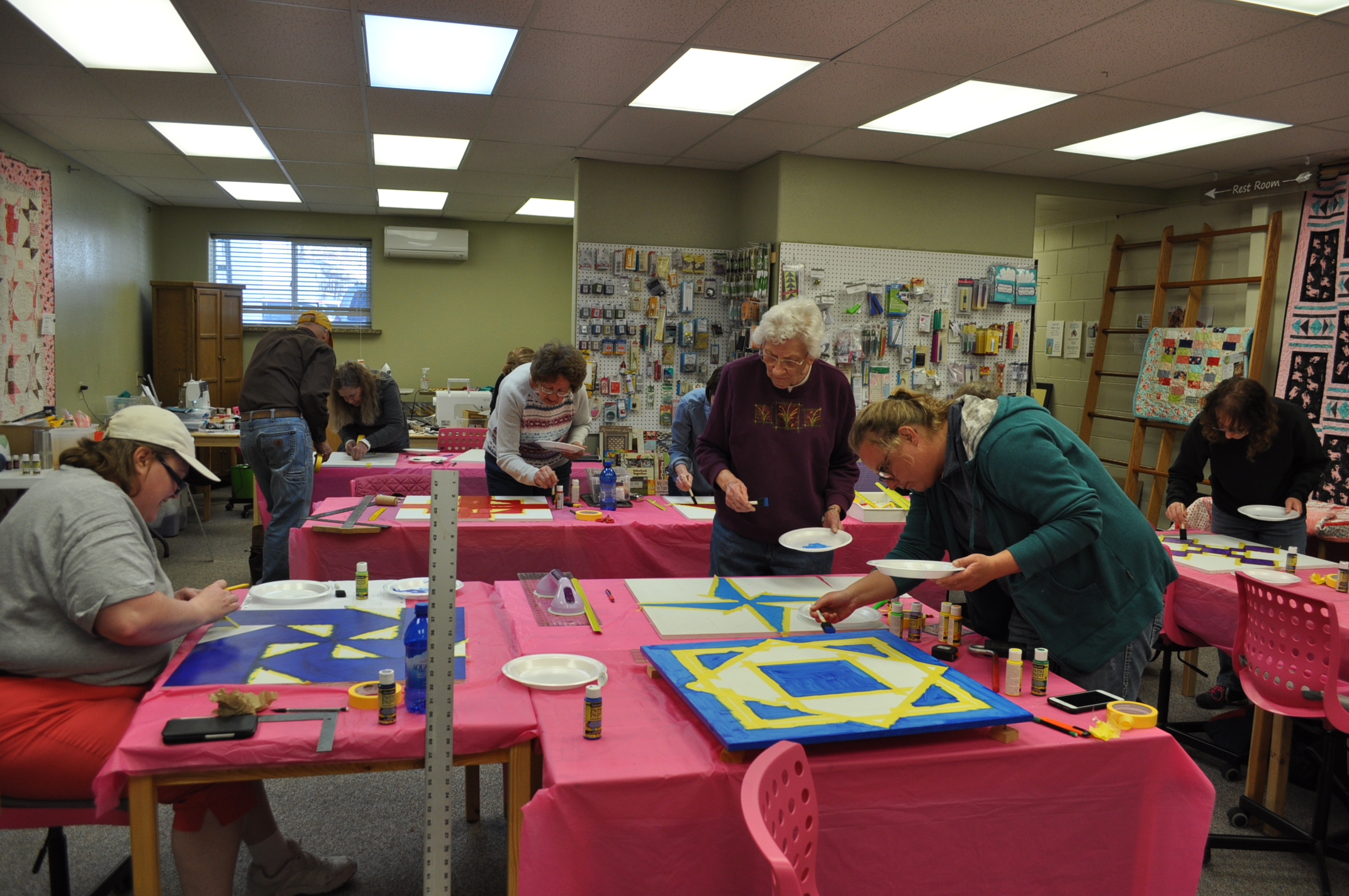
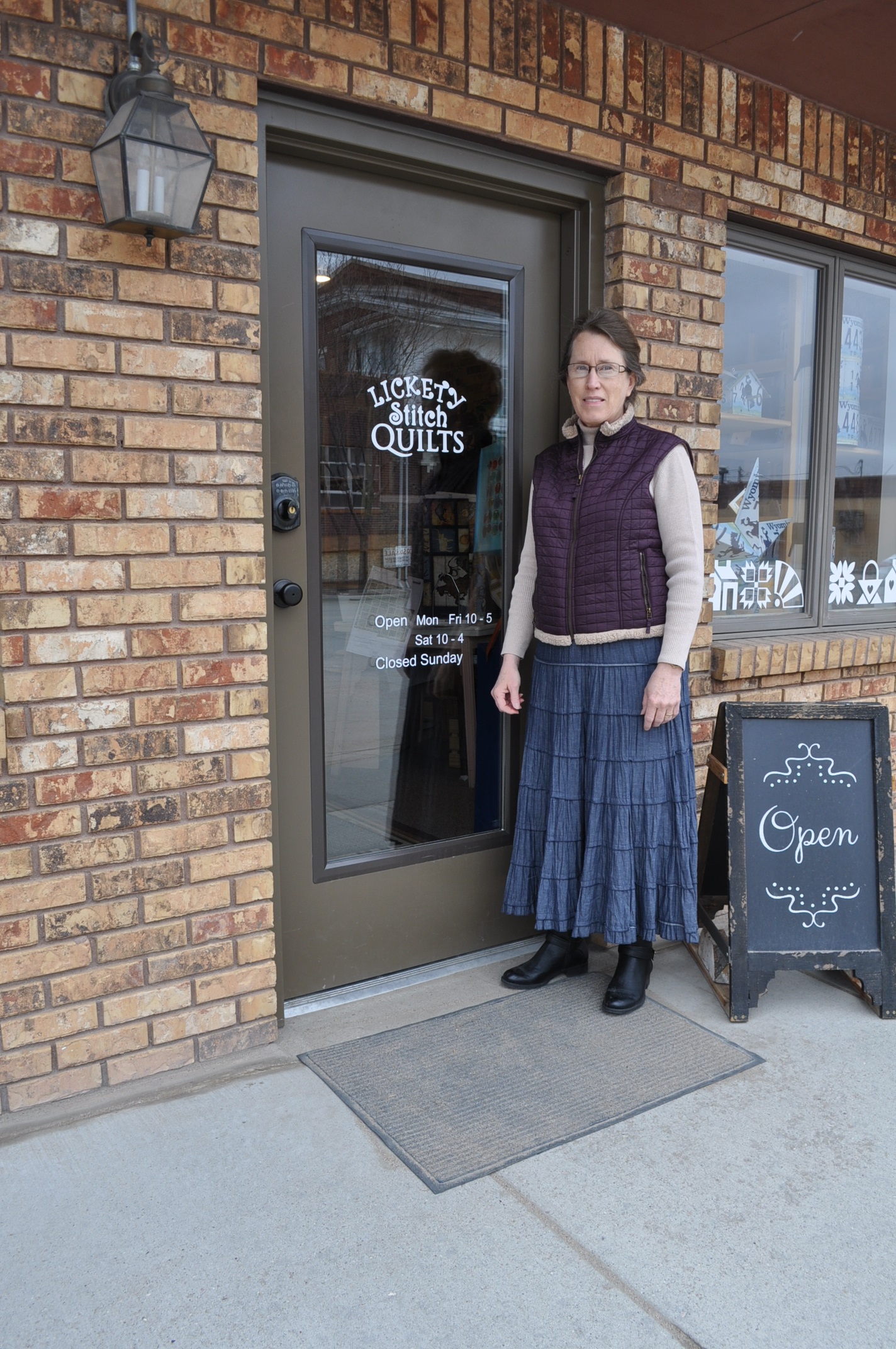
Shop: Lickety Stitch Quilts
Address: 206 S. Main Street, Lusk, WY 82225
Phone: 307-334-9963
Owner: Karen Wisseman
Employees: 1 full time employee and 2 part- time employees
Website: www.licketystitchquilts.com
Facebook: Lickety Stitch Quilts
Services Offered: We are a full-service quilt shop with fabric, notions, patterns, books, classes, and provide machine quilting services. We have been in business for 8 years.
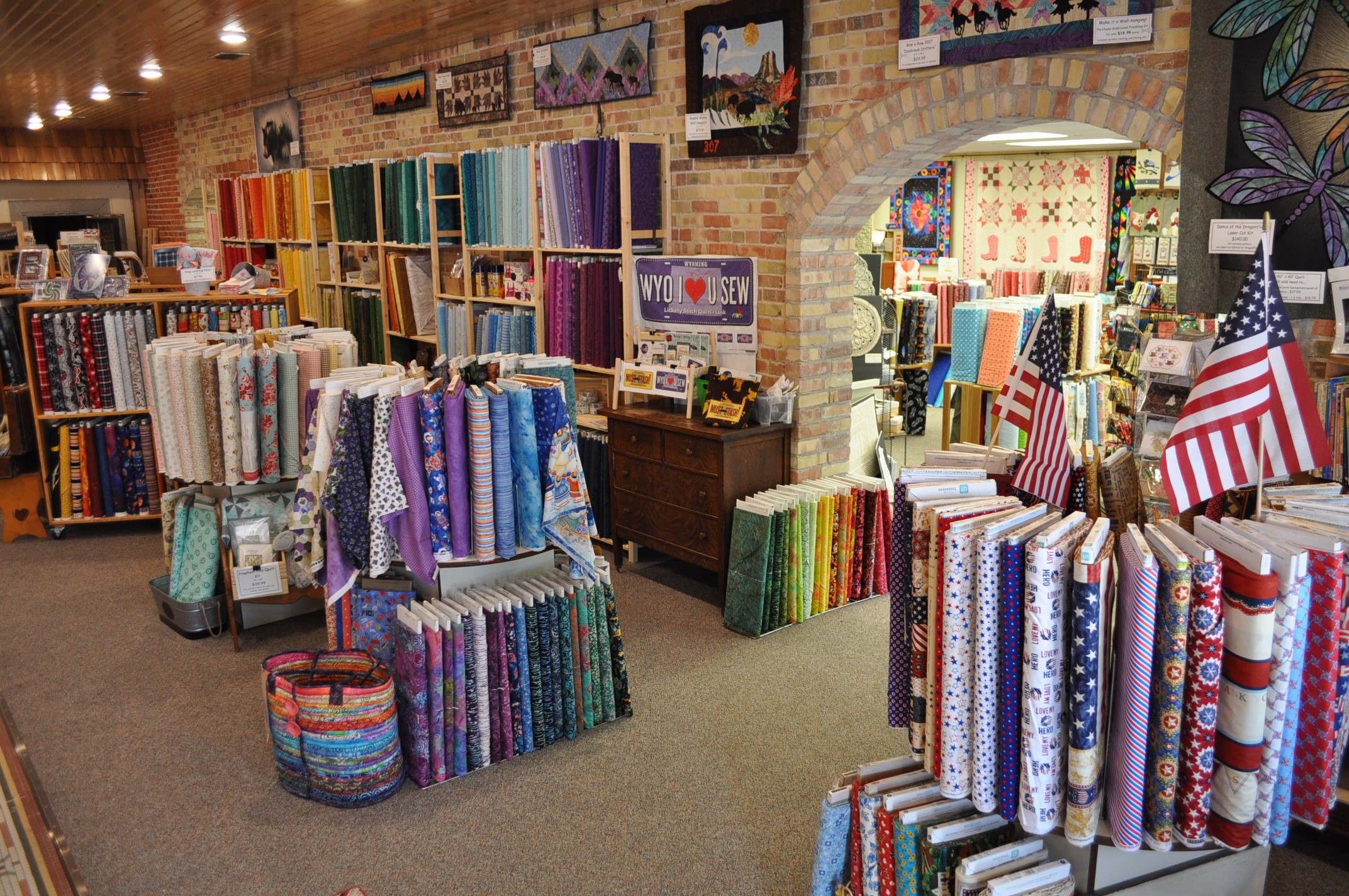
Lickety Stitch Quilts opened in March of 2010. My life-long love for fabric, sewing and quilting was all I had going for me as my education and background were in nursing, and I had worked as a legal assistant but I had no experience in retail. I was pretty much totally ignorant about owning or running a retail business when I opened my shop. Plus Lusk is in the least populated state – Wyoming – and in the least populated county in Wyoming. So really I didn’t have a lot going for me! I purchased the remaining inventory of a store that closed about 90 miles from Lusk. My husband and I purchased an old restaurant on Main Street and remodeled the place into a quilt shop. Highway 85 goes past our door, and it has been our salvation! Our local population is very supportive of our store, but it is limited at best – and we could not survive on the local business alone. We added a website for internet sales a couple years after opening, which slowly grew and gave us one more income source. I also offered machine quilting services from the beginning, another welcome and necessary service to the local quilting community.
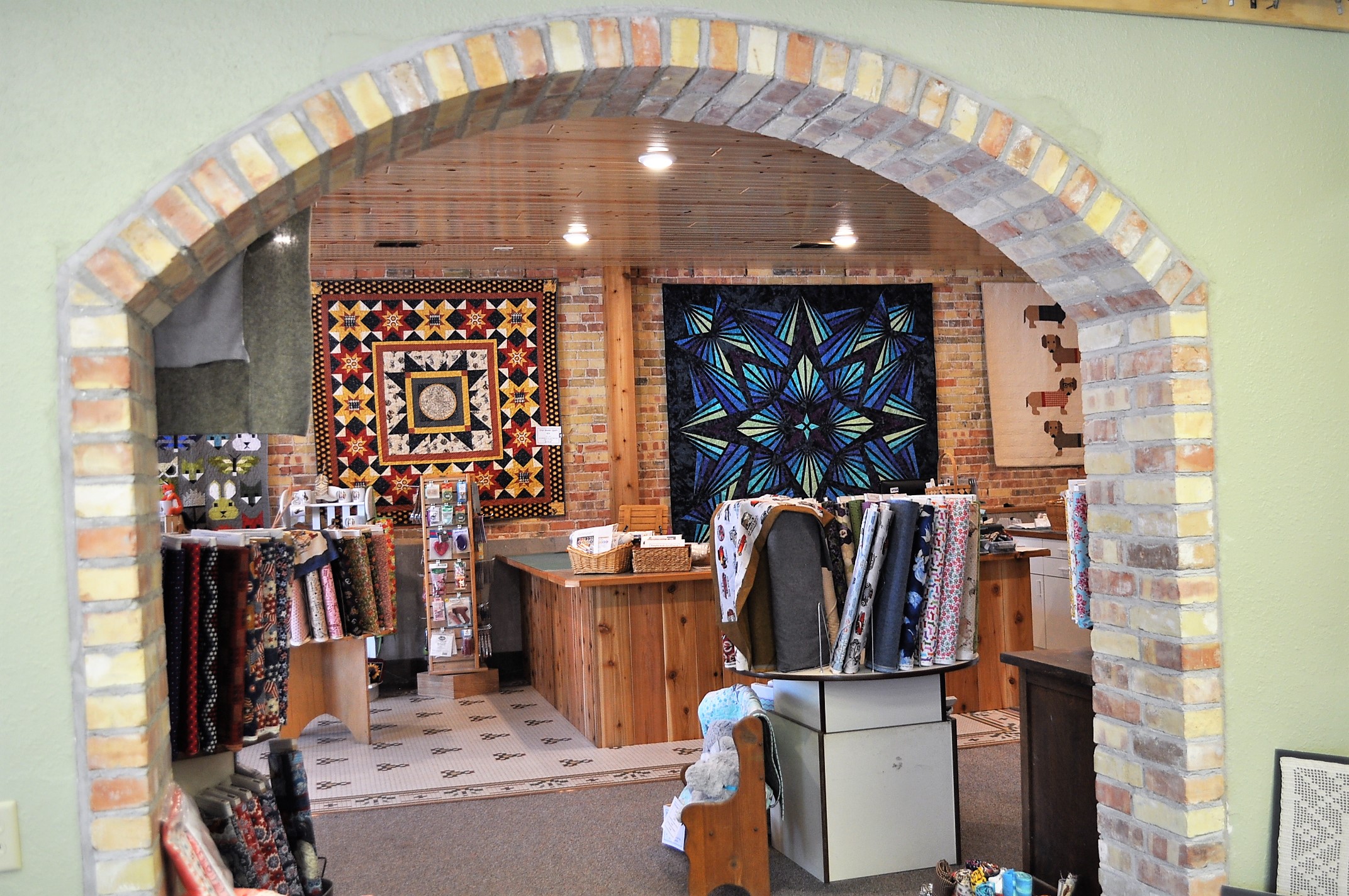
Several years ago you had a flood. Can you talk about how it happened and how you’ve recovered? What advice can you give to react to an unexpected event like this? How did insurance help cover the costs of reestablishing your store? How did your community play into your recovery? Did you feel like giving up?
One night in June 2015 a freak flash flood swept through our town, 24 inches of water breaking our door down and washing through the store, wreaking havoc not only in our shop but throughout the whole downtown area and many residences in the community. We lost over 1/3 of our inventory and had to close our doors for a month in the middle of the summer so lost all business income. There is no way to describe the mess it left in its wake, but the townspeople and community rallied around and helped all the businesses clean out and clean up. Because we were in an area that had never in history been flooded, we did not have flood insurance and our regular insurance did not pay one cent for flood damage to the building, equipment, or inventory. We suffered over $150,000 loss from that incident.
The most impressive show of community support was the first days after the flood when the town was cut off from the outside world by washed out roads, no electricity to the flooded area, and limited clean water and an abundance of dirty water and mud. A huge portion of the able community rallied to help. Over 30 people were in our store alone that first day, carrying out the flooded ruined inventory, forming a chain up the stairs from the flashlight lit basement (our electricity was off for several days) to hand heavy, dirty, soggy dripping items from one to another then carrying it out to waiting trash haulers. After the ruined inventory was out, they came back to remove the inventory we could save. My mother had a new empty garage where we spread tarps on the floor and stacked bolts of fabric and all the rest of the inventory to save until we could clean up the shop.
Anything that was within 24 inches of the floor was a complete loss, but above that much had been spared. We had about 200 bolts of fabric that got splashed and dirty, but were not destroyed. We hosed off the bolts, then, with a lot of help, unrolled the fabrics on the lawn in the city park to allow them to dry. (Pictures of this went viral on the internet – all the colorful fabric spread out in the park – and ended up being a ray of hope in the midst of a time of despair for our little town!) The quilt guild from a neighboring town took much of this fabric home and members washed it for us. This is a huge thing, to wash 200 bolts of fabric! Then we rerolled it and sold it as “flood fabric- prewashed and preshrunk!”
There were many elements that weighed into my decision to reopen the business. Although we had a huge loss of inventory – we still had over 1/2 of it to deal with. The question quickly entered my mind, if we were to close, how would we liquidate that?
In a small town such as ours, (our population is 1500) every business is vitally important. All the affected business owners were facing difficult losses, and if one would have given up, I don’t know what the chain of effect would have been. Every business affected chose to rebuild, and the community was behind us all the way.
By then we had an established clientele supporting us from outlying areas as well as our own community depending on us. Drawing from personal savings, we ordered in more inventory, spent hours and days ripping out flooring, flood damaged equipment, cleaning, repainting, repairing, and replacing! Anyone who has been in a flood knows how flood waters are filled with a very fine sand that gets into everything! We still find “flood mud” hidden away in cracks and crevices! We opened again for business one month after the disaster. It was over a year before the town returned to near normal, since the main highway overpass had washed out and took many months to repair, reducing our regular tourist traffic that is a main support of our store.
Advice to others should they ever face such an event? Accept help from the very beginning when it is offered! The first few days there will be many people offering to help, then that will decrease as time goes on. It is just too huge of a job to take on alone.
We are glad the flood is now 3 years behind us.
In 2017 we annexed the building beside us and more than doubled the size of the shop. This decision has been good, and we have seen business increase substantially as we have made improvements, enlarged the space, and added inventory.

How do you manage your staff? Do you have separate staff who just deals with online business? Are you working in your store every day? Who manages when you have to leave for vacations, etc. What system do you have for scheduling employees?
I am very fortunate to have my sister, Jane, working with me in the shop full-time, and she knows as much about most of the business as I do. I involve her in most of the business decisions as she is my trusted friend and adviser as well as my sister! She and I work in the store pretty much every day – but it works out really well with the two of us, we can both have freedom to take a day off, or a week or a vacation – with the other covering the store. I don’t make a set schedule – we all work together to allow each to have the time off she needs or wants and still keep the store covered. In fact, we often tell each other to take a day off – even though it is easier with two in the store, we want the other to have some time for personal things and family. We also have a unique situation that works out well for us in that our 85-year-old mother lives near us. She likes to come into the store and we appreciate having the opportunity to have her here and spend time with her. She is my “volunteer” who cuts fat quarters, kits and panels; folds and packages; prices items; runs errands and delivers and gets mail, and does a lot else for us. She does not want to run the POS to check out customers, but she helps them find things because she knows the store well. I have another part-time employee, Chelsea, who takes care of our website and enters products into the POS system which is integrated with our website. She works 1- 2 days a week, and is a very important part of our team. She also helps with customer service, and can man the shop by herself if Jane and I are both gone. Her “other” job is working with her parents on their ranch, so we work her schedule around her farm and ranch work.
Western fabrics seem to be a niche for you. How did that come about? Are the customers who purchase western fabric local, online, or a combination of both?
Lusk is in cowboy and cattle country – so it was just natural for us to stock western fabrics from the beginning. We found that to be the local’s favorite genre, but also those traveling through expect to find western fabrics in such a western environment. A big portion of our internet sales are also western fabrics – because we stock them much heavier than most shops online. Customers often comment we have the best selection of westerns they have ever seen.
How do you display and store panels?
Panels are a challenge! We have just come up with a new display idea that we are trying, and it hasn’t really proven itself fully yet, but I think it is going to be good. My husband built me small crates that slide onto shelves into which we have placed the cut and folded panels. We have pictures of the panels mounted on the fronts of the crates (using clear folders made for CDs) We also have one of each panel clipped on a clothes hanger hanging on a rack so customers can see them there.
What kinds of items to you sell for impulse buys? Where do you display them?
When we expanded our store last year we added a section in the front for non-quilt items, specializing in Wyoming made and Wyoming themed products. This is an ongoing project that I am adding to as time goes on. Another item I added was a favorite brand of herbal tea –and it has gone over well.
When did you get into having painting classes for barn squares? What do you provide? Are customers making them for their own barns? Do you have a barn square trail near you?
The year after the flood I came up with the idea of starting a Wyoming Barn Quilt Trail as a community project here in Lusk as a way to brighten up the town and perhaps bring in more tourists. My husband, Dave, cut the boards and we painted a few to learn the process, then held classes at the fair grounds for anyone in the community that wanted to paint a quilt square. Response was huge, people loved it, and we bought gallons of exterior house paint in all colors to share at these classes. It ended up being a several-month project for us, with many weekends and evenings devoted to cutting and painting boards with primer, teaching classes, helping hang the boards. We now have over 100 in the town and community, and continue to have classes here and in neighboring towns. We have refined our process, now I stock all colors in 2 oz bottles of Delta Patio Paint in the shop so we don’t have to tote around gallon cans! We also sell prepared blank boards in several sizes for those who don’t have the tools to cut their own boards. In May Dave and I are traveling to 3 other towns in Wyoming to hold Barn Quilt Painting Classes – and we have requests coming in often for more classes. I am working on developing printed patterns and instructions to sell along with the boards and paints. We hope to extend the Wyoming Quilt Trail across the state.
Do you own or rent your building? What are some of the advantages you see from both?
My husband and I own the building our shop is in, and then Lickety Stitch, our business, rents it from us. This was the arrangement that our accountant suggested as the most effective in saving on taxes. There are advantages and disadvantages of owning, but I feel the advantages are much greater. We are in total control and don’t have to have an owner’s permission to make changes. The disadvantage is when we get water in the basement – there is no one to call to take care of it but my husband, who is the maintenance man for me in every way! The addition and remodel project we did last year would have never been possible if we hadn’t owned the building, since we had to buy the building next door and remodel it, cutting through to join the two buildings. I am very fortunate to have a talented and willing husband who does a lot of the work on the buildings himself. We hired contractors to do what he could not do, but he did much of it himself.
What do customers first see when they drive up to your store and then step inside?
Although the outside of the store is rather unassuming, when customers enter our store for the first time, they can’t believe there is such a nice shop in such an unlikely place! They don’t expect a small town on the prairie in a quite remote rural community would have a quilt shop like ours. I would say that amazement is the first thing most experience when they enter the shop, then excitement to explore all we have in stock. We are on a main thoroughfare from the Colorado front range area to the Black Hills of South Dakota. The highway runs past our front door, and if we can get people to stop, they become customers from then on! Snowbirds traveling from North Dakota, Minnesota, Wisconsin, South Dakota and Montana have discovered us as they travel through to points south, and they make a stop going and coming spring and fall. We often get the comment from new customers, many from out of state, “my friend told me about your store, and that I had to stop in when I came through.” Word of mouth has been our best advertising, and we continue to grow as people hear about our store.
Open for Business is brought to you by American Quilt Retailer, a trade publication for independent quilt shop owners, and sponsored by QT Fabrics.

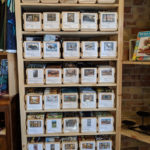
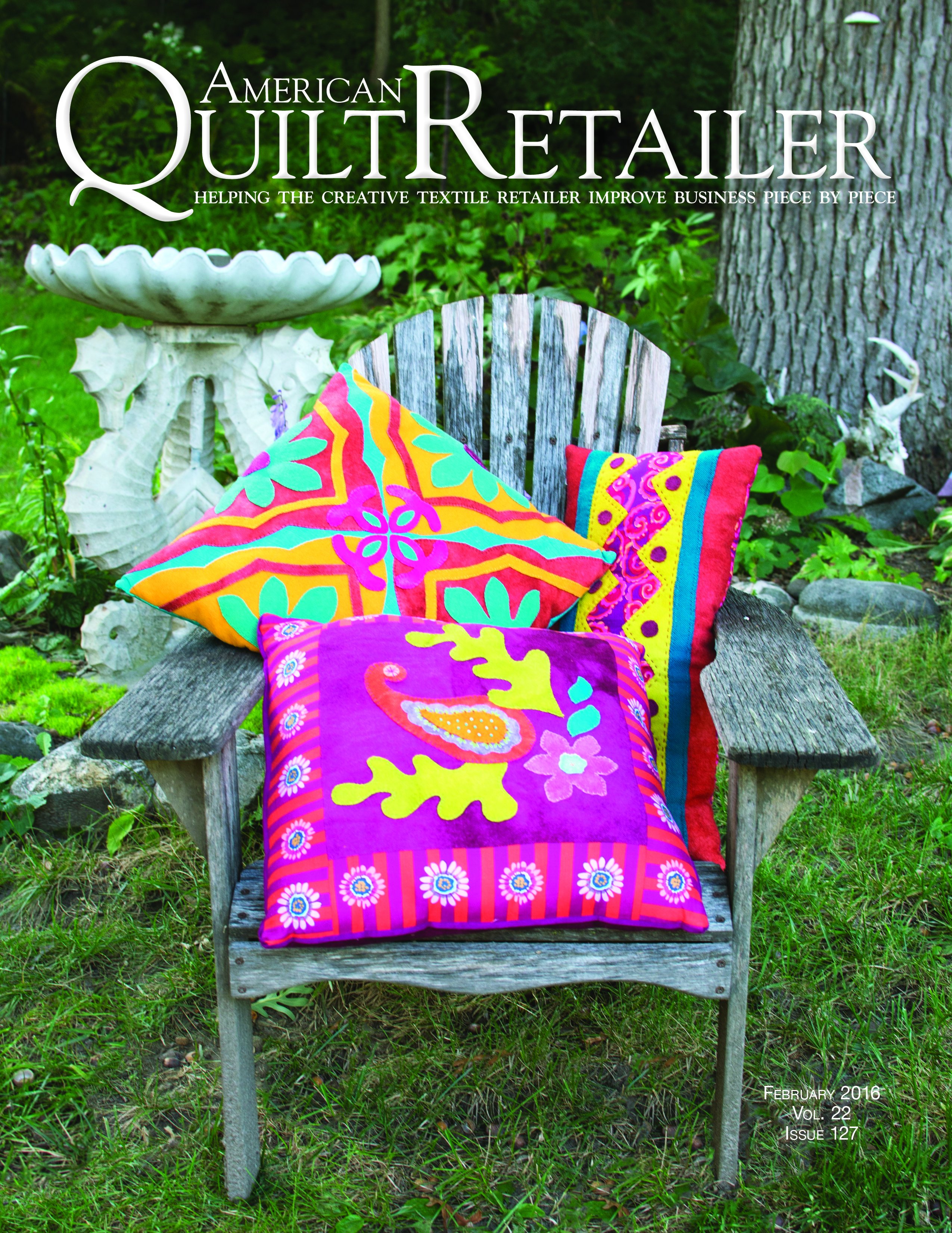
When I was 8, (about 1954) my family grilled beef burgers for us in the park of Lusk, WY. We were on vacation, traveling from KC, MO. If I ever get back your way, I will surely stop to see your store, as I am a quilter now. Loved reading your story. You are blessed to have friends who were so helpful to you after the flood. A Nebraska Husker!